North Queensland
Abundant with biodiversity, the north of Queensland makes for a great visit. Reef, rainforests and a whole lot of beaches!
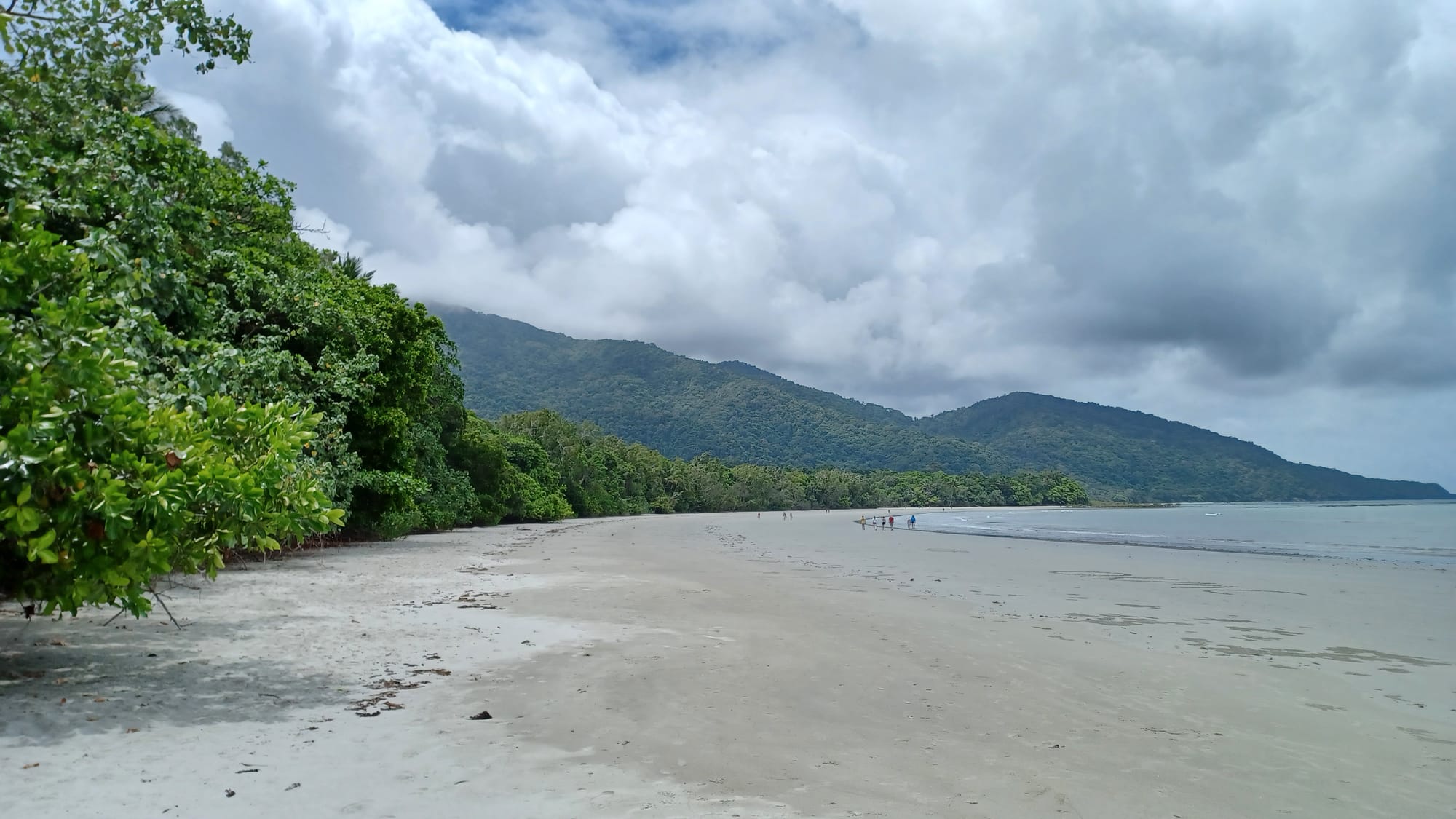
With all my studying complete and exams out of the way, at the end of November I took a trip up to North Queensland, to explore the tropical regions of Port Douglas, Kuranda, Cairns, the Daintree Rainforest and Great Barrier Reef. This was also my first ever solo trip, and in this blog I reflect on that experience as well as providing you with some ideas of how to plan your trip up there.
Solo Travelling 🧍
As mentioned above, this was my first ever solo travelling trip. I didn't necessarily plan for it to be that, but it just so happened that my friends were all busy during the time I wanted to go. I didn't have any problems with going solo, but there is always an element of uncertainty if you've never done it before. Now looking back on the week I had up in North Queensland, it was fantastic as a solo traveller. Some of my key takeaways from it were:
- Plan in advance - this goes for any holiday, but more so when you're alone. Try and pre-plan important things (such as where you're staying, transport, booking tours etc) in advance to save you the hassle when you arrive. I pretty much had my entire itinerary sorted before I flew out, meaning I could enjoy the trip and not worry about what I was doing tomorrow.
- You're not really solo travelling as a solo traveller - let me explain. When travelling by myself, I found myself more willing to talk to others, whether that be fellow guests at the resort, the receptionists, or just random people I met on my hikes. You still connect and communicate with others when travelling by yourself, so I never felt lonely or isolated. It helps you become more confident with talking to strangers that you meet on your adventures, and in most cases people are always down to have a chat when on holiday!
- You have complete flexibility over what you do - the great thing about solo travelling is that you can do what you want, when you want, how you want. There's no need to accommodate everyone's preferences, and so that added flexibility can help build your perfect itinerary. For example, I really don't mind cooking whilst on holiday, so I found a self contained studio apartment for the week that I could use as a base in Port Douglas, and it was great.
Logistics
Getting there & around
The closest airport to fly into is in Cairns, from which you'll have to take a taxi depending on where you decide to stay. Generally, the easiest way around North Queensland is by private vehicle (through car hire or tour companies). There is limited/no public transport infrastructure once you leave the main towns, and to explore parts of the rainforest and beaches properly a private vehicle is needed. I opted to do most my sightseeing via tour companies. The added convenience means for a single payment your transport, itinerary and sometimes meals are sorted. I was based in Port Douglas for the week, and within this town you could walk everywhere - so no need for any transport.
Where to stay
Both Cairns and Port Douglas have ample options for accommodation to suit all budgets - from backpacker hostels to luxury resorts. In Port Douglas, I stayed at Bay Villas Resort in one of their studio apartments. I would highly recommend staying here, the service and staff were great and it was reasonably priced. Port Douglas is mostly a tourist town, yet it didn't feel very commercialised and busy (perhaps because I went off-peak), so I would also recommend to stay there. Port Douglas is about a 1.5 hour drive north from Cairns, and is placed in an ideal location to things I wanted to see and do (see the map below).
Port Douglas
I spent my first day exploring Port Douglas, having arrived at night the day before. It's a town on the Coral Sea in the far north of Queensland, and is known for being a base to access the Great Barrier Reef and Daintree Rainforest. It's not a big town, with pretty much all shops and amenities located on Macrossan Street, the main street in town. If you do choose to self cater, there is a large Coles where you can get all your groceries from, as well as plenty of restaurants, shops and bars. The weather up in North Queensland is tropical - that means hot and humid, with intermittent rain showers during some parts of the year. It never really felt 'cold', meaning you can even be out during the rain (it feels like a warm shower!). As this was the only free day I had to explore the town, I mapped out a circular walking route that would take me to all the main points.
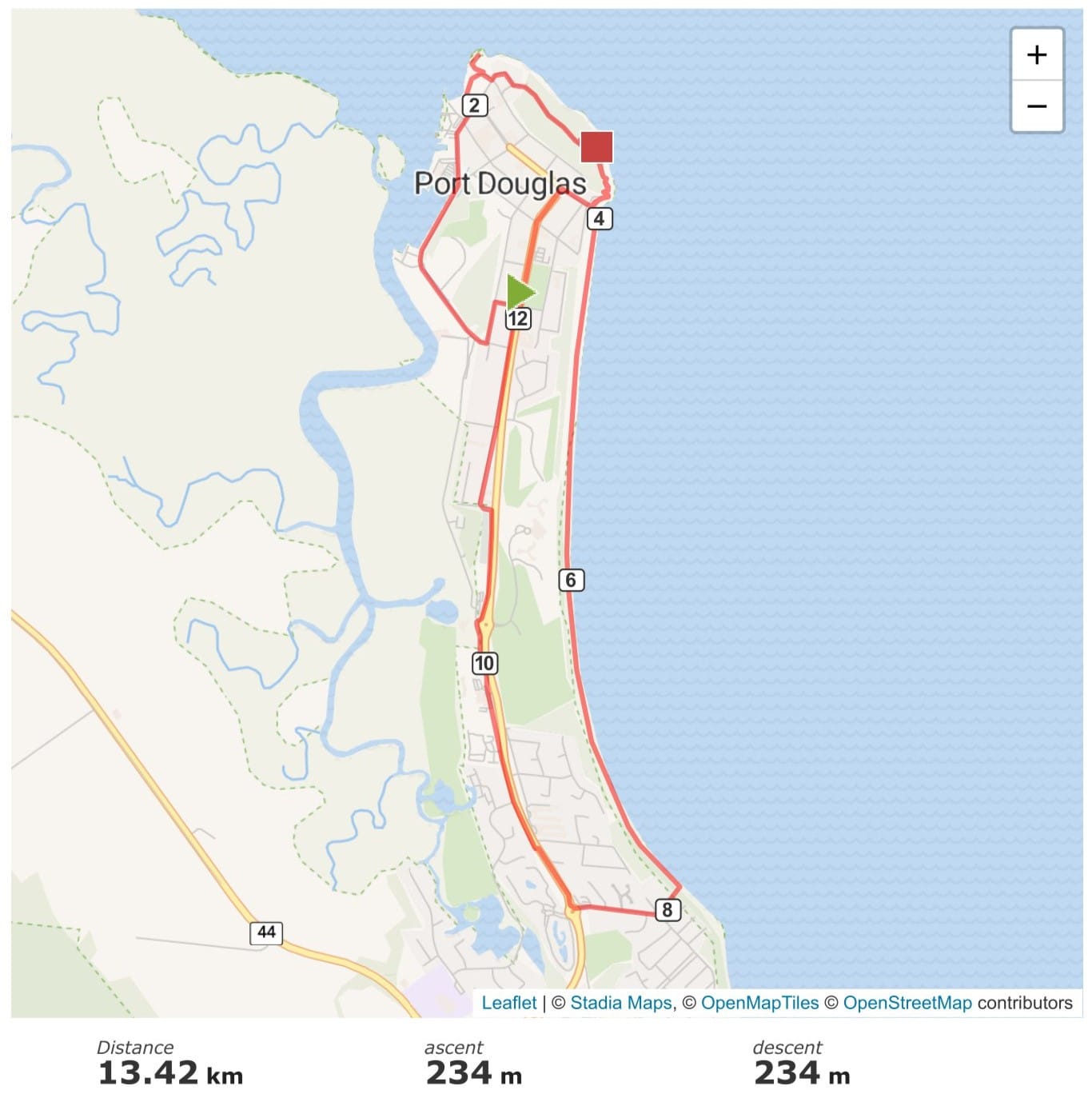
- From my apartment I walked along Wharf Street to the harbour, home to various yachts and also the point from which the Great Barrier Reef tours depart (more on that later).
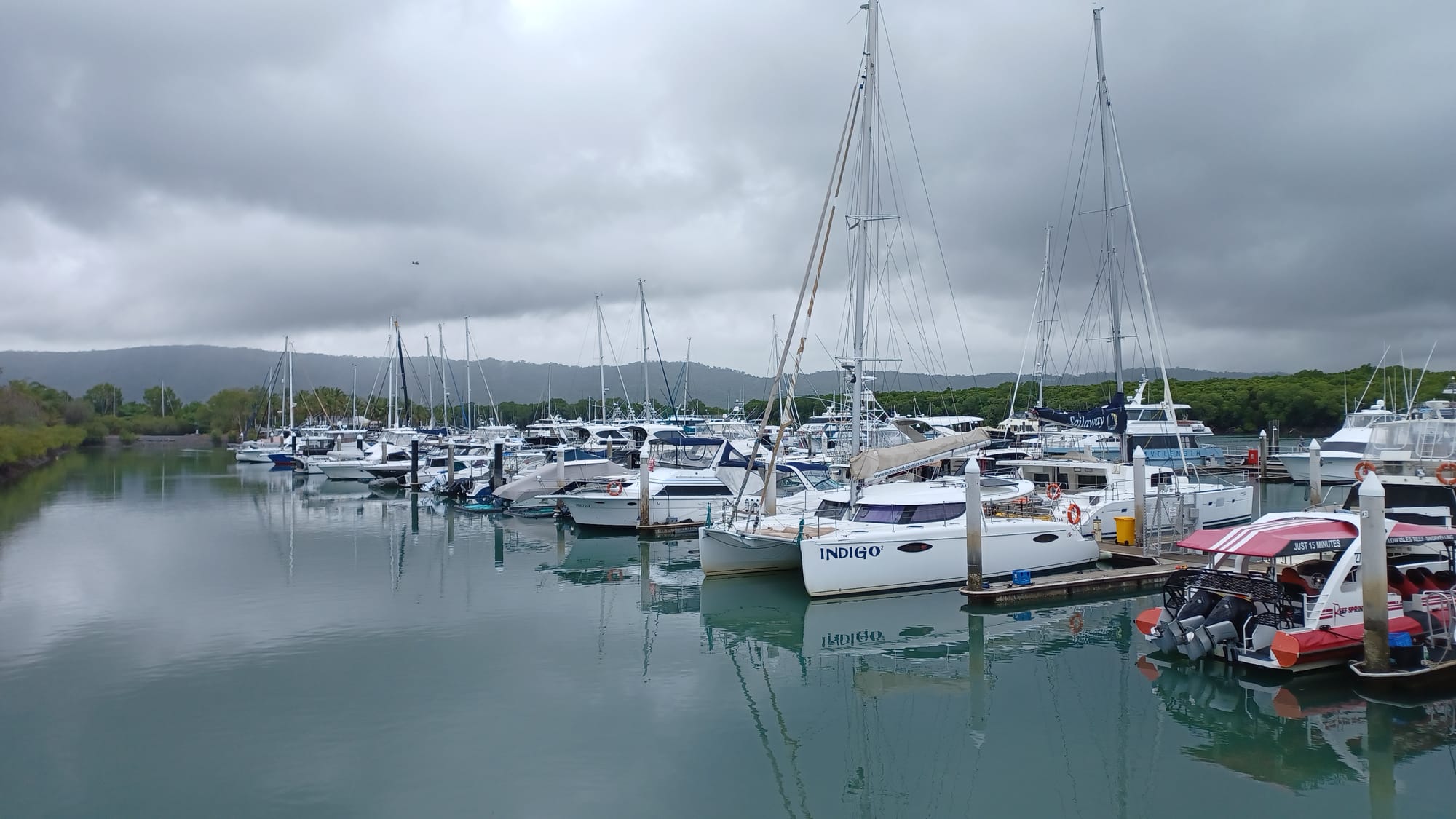
Port Douglas Harbour
- From the harbour you can keep following the path around to Rex Smeal Park - the northern part of Port Douglas. It's where you'll get your first glimpse of the open ocean, with misty rainforest in the distance, whilst standing next to palm trees.
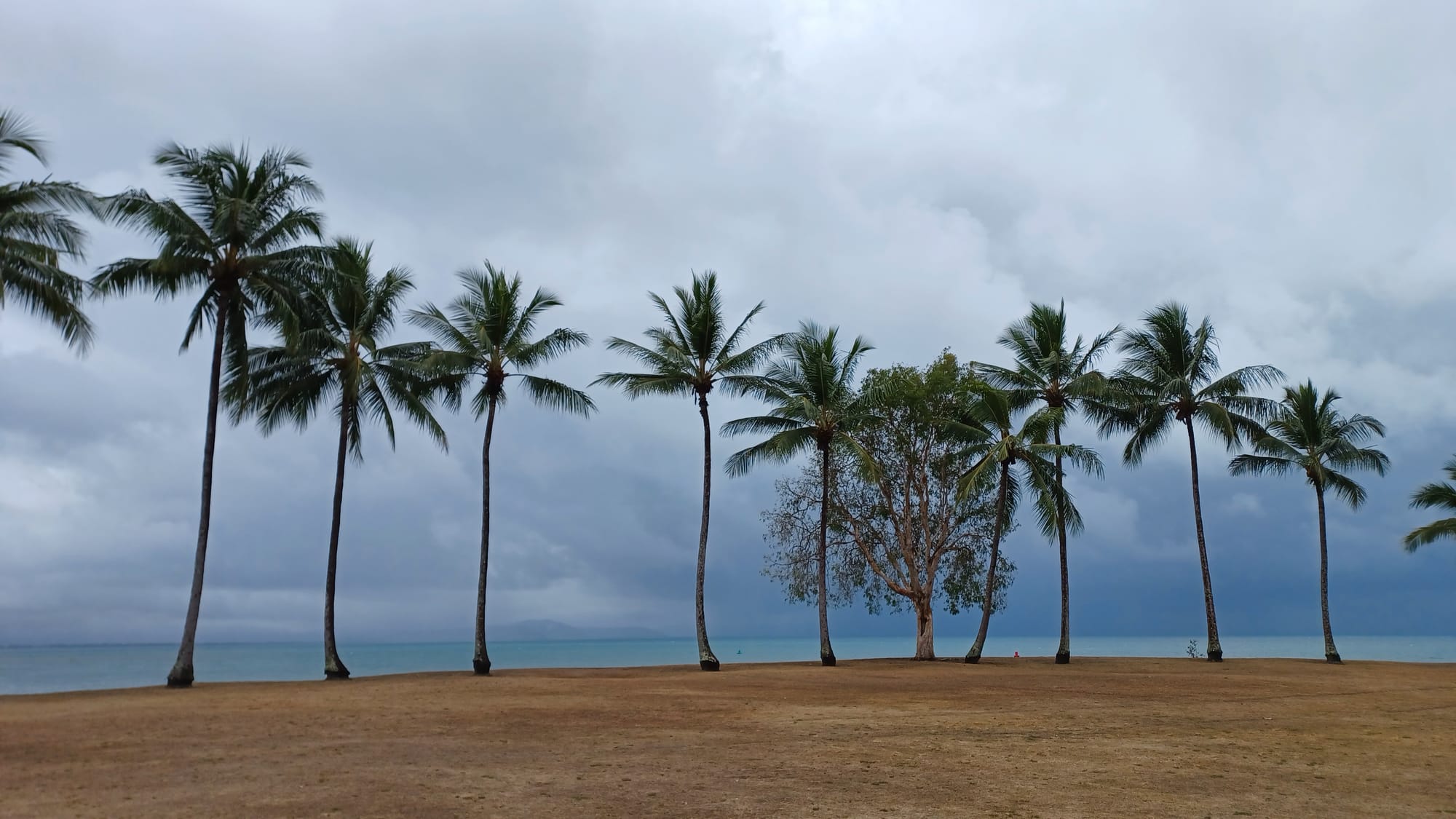
Rex Smeal Park
- There is a path that runs from Rex Smeal Part up to Flagstaff Hill lookout, but whilst I was there it was closed for maintenance. I followed the roads up to the lookout instead. From Flagstaff Hill you get amazing views of the 4 Mile Beach and lush rainforest around it.
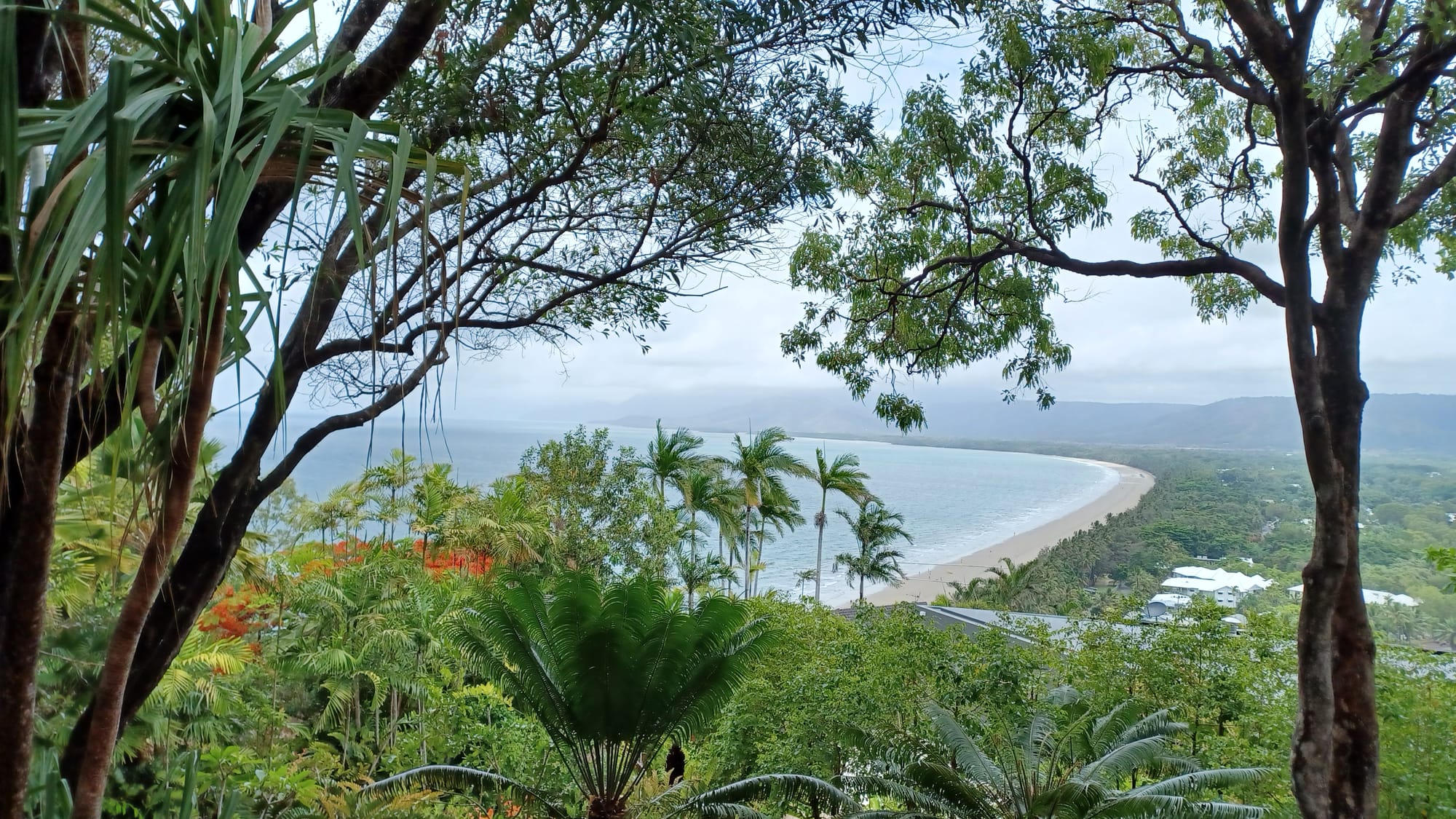
Flagstaff Hill Lookout
- The walking path takes you down from the lookout to the north end of 4 Mile Beach (fun fact, the beach is actually 4km in length). Depending on how you're feeling, you can spend some time on the beach or walk the length of it. I chose to do the latter, and it's a great walk. You have the forest to the right, with coconut trees and dense vegetation, white sand in the middle, and open ocean to the left (not a boat in sight). Be sure to stay well clear of the water if you are going during jellyfish/croc season, it's a real safety concern up here.
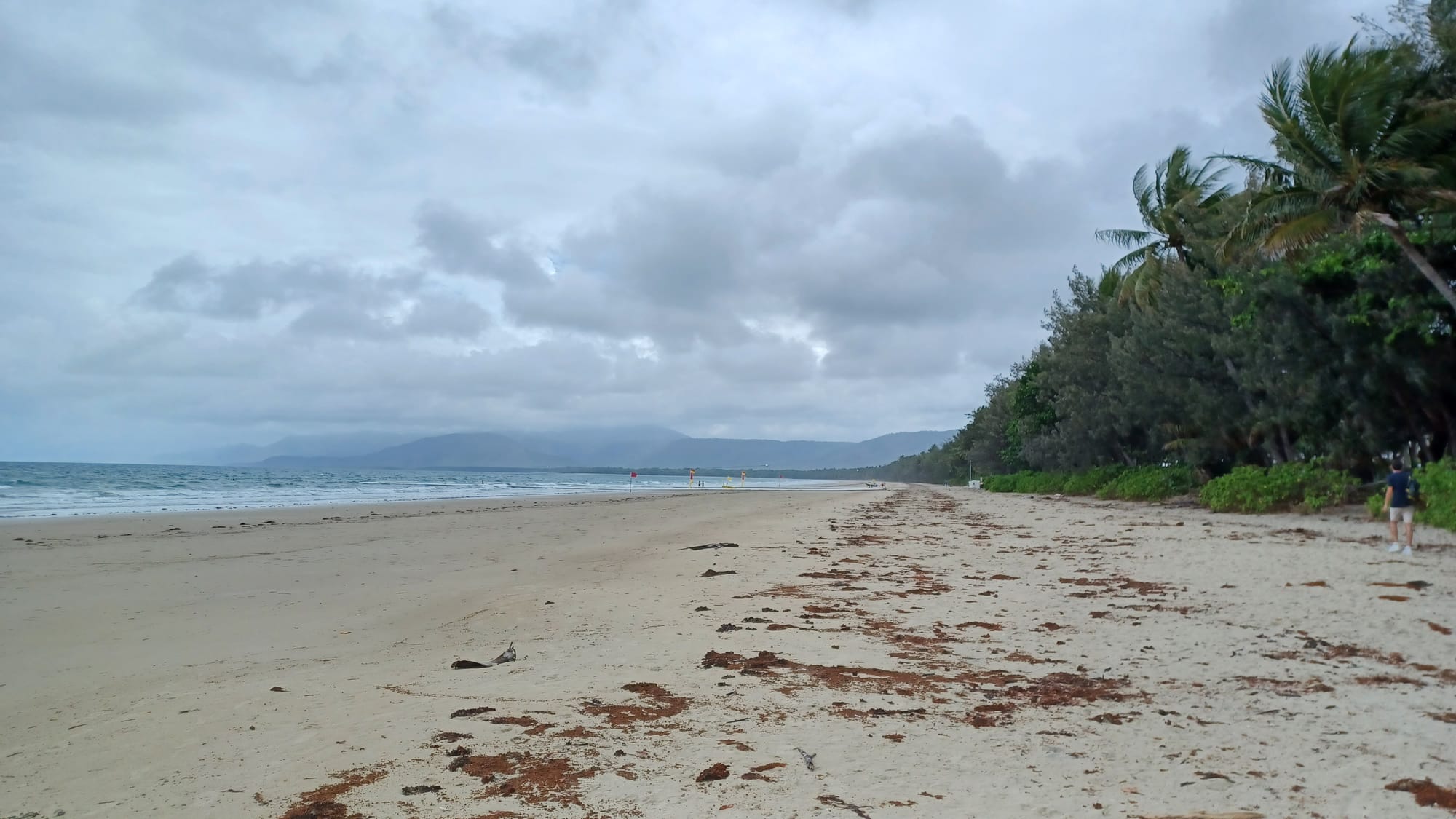
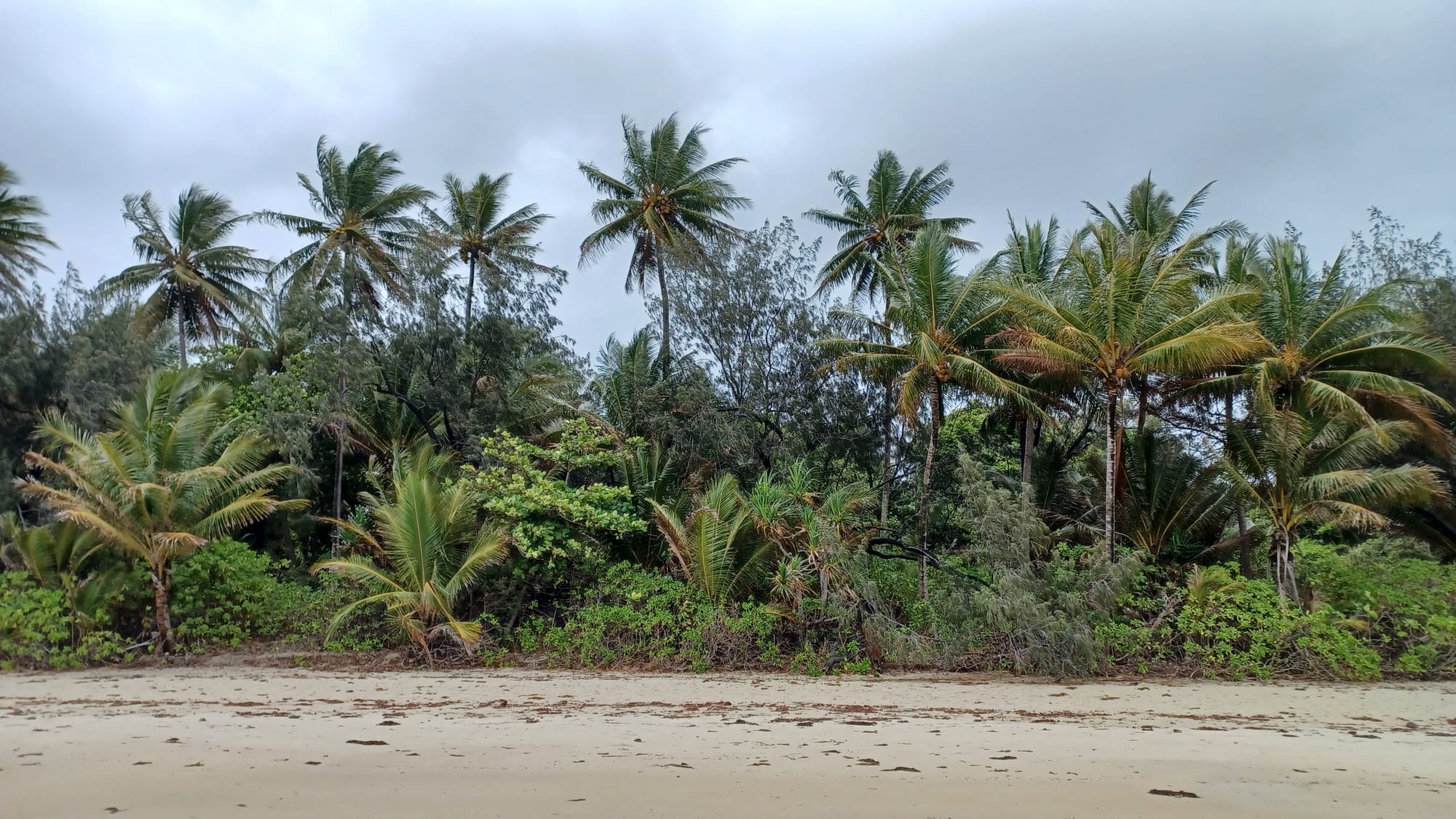
4 Mile Beach
- Once you reach the southern end of 4 Mile Beach you can take the inland road back to your accommodation.
Daintree Rainforest & Cape Tribulation
As I mentioned earlier, the best way to explore North Queensland is by hiring a car or through a tour company. I spent the day in the Daintree Forest, Mossman Gorge and Cape Tribulation on Tony's Tropical Tours. There are a few tour companies that provide a similar experience. The day started at around 7am when I got picked up from my accommodation. In total there were about 11 of us on the tour - I would also recommend going in smaller tour groups as you get a more personalised experience.
Our first stop was Mossman Gorge, where we completed a short walk. Mossmand is the southernmost point of the Daintree Rainforest. The Daintree makes up about 90km of coastline, and is part of the wider 'tropics' ecosystem (which covers an area of 90,000 hectares). It was at this point I really started to get a feel for the range of flora and fauna in the Daintree, and how rich the ecosystem is. I haven't ever been somewhere quite like it.
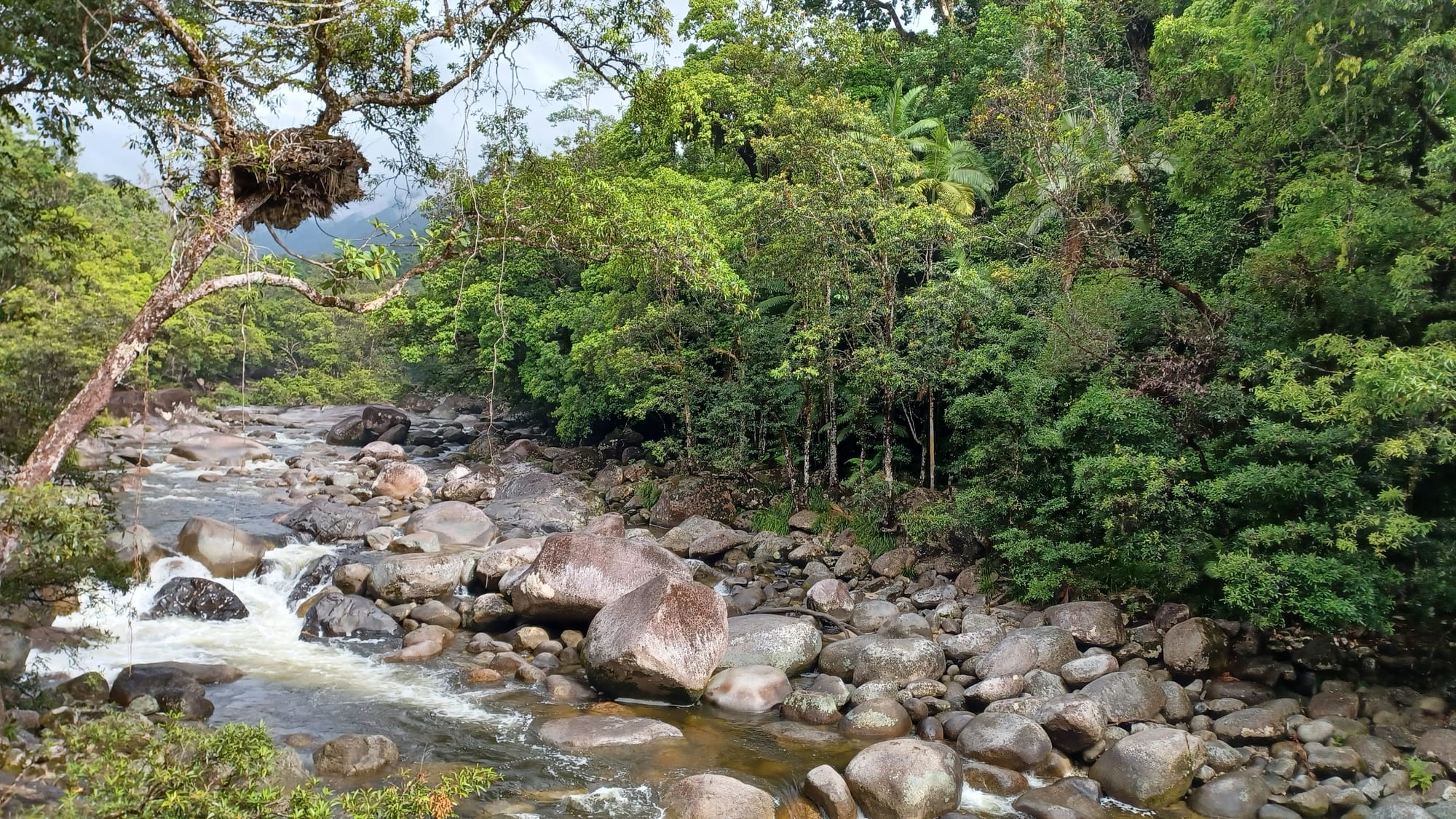
Mossman Gorge
Following Mossman Gorge we went on the Daintree Wildlife Cruise, with the main aim of spotting some crocodiles! There's two main types of croc in the area - estuarine and freshwater. They move from one river system to the next using the ocean as a highway. Aside from the jellyfish, that's another reason why no one swims in the ocean in November. We managed to spot a few crocodiles, but as it's the warmer season most of them were in the water. In the winter months (June-August), the crocodiles are more likely to come out onto the banks to soak up the sun. There's also a general rule of thumb to stay at least 5m away from the water's edge, as these guys can move at about 35km/hr. This means that they can cover that 5m distance in 0.514 seconds. With the average human reaction time somewhere between 0.15 and 0.30 seconds, this distance should (theoretically) give you enough time to move out of harms way.
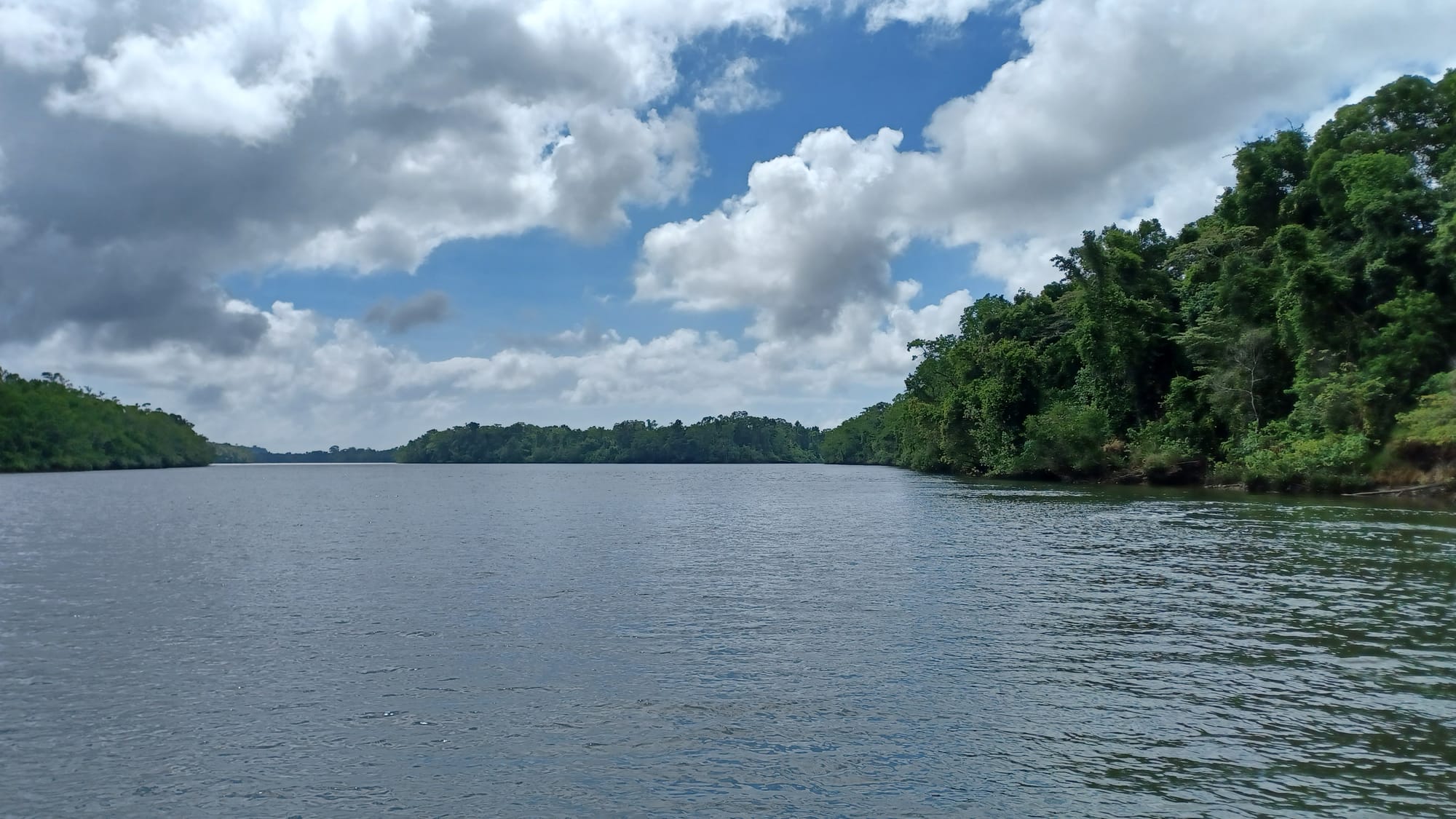
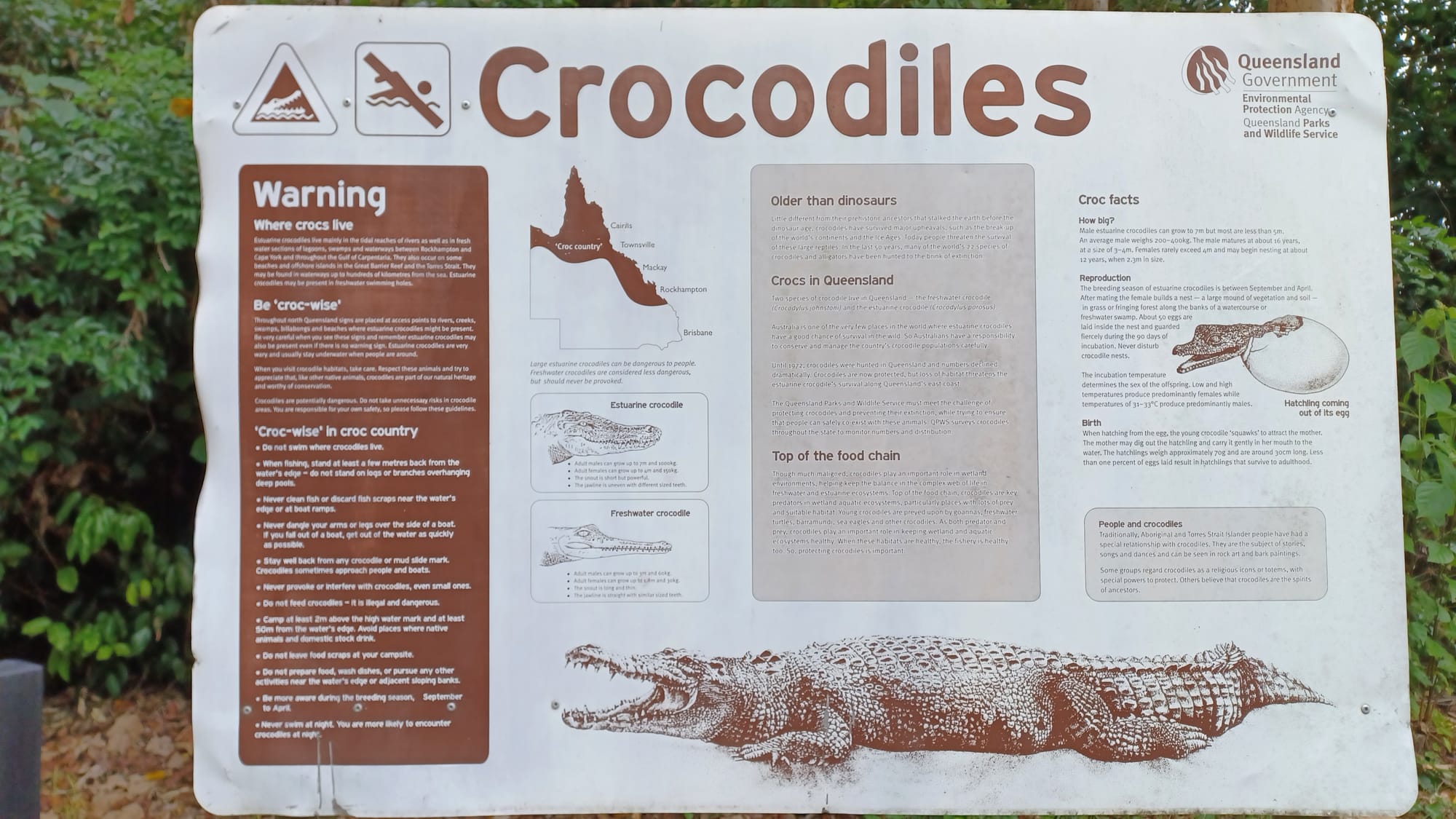
Daintree Wildlife Cruise
After the river cruise we went to a spot to enjoy some tea and biscuits. The tour company was very accommodating of all dietary requirements, and had a whole selection of vegan biscuits for me. That's another benefit of touring with smaller groups - it's more likely that they'll be able to cater for your individual needs.
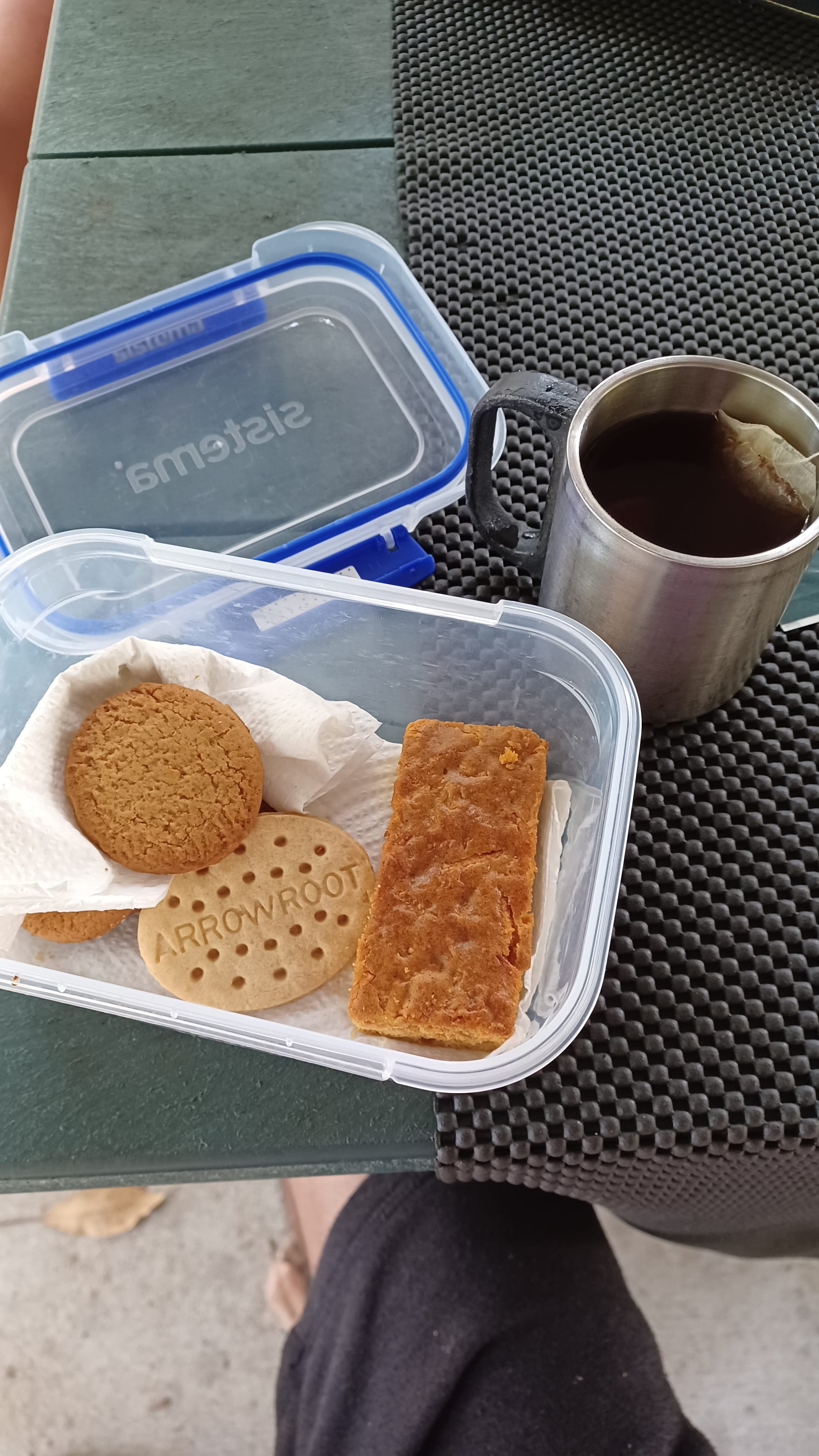
Vegan mid-morning tea and biscuits
Our next stop was a guided tour of Noah Valley Rainforest. Our tour guide (shoutout to Chris), took us through the trail and pointed out more biodiversity. It really gave me a feel of how interconnected and vital the rainforest is for our planet. We saw a huge range of plants and animals, with some of the trivia (that I could remember!) about the Daintree being:
- The rainforest communicates via chemical interactions - plants talk to each other to inform others and let each other know when they need nutrients, there is danger etc.
- Coral dimethylsulfide (DMS) - corals, when above the water level, secrete a type of goo to protect them from the sun, like sunscreen. Under the water, they do not need to protect themselves. What they also do is produce DMS, a chemical that is released into the atmosphere above them. This chemical compound forms low-level clouds of the reef, reducing the solar radiation that the reef is subject to, thereby protecting it. Once the sun goes away, the reef will stop producing DMS. These clouds will then travel over to the Daintree, condensate and fall as rain.
- Crassulacean acid metabolism (CAM) photosynthesis - an adaptation that allows some plants to photosynthesise during the day, but only allow gas exchange at night. This reduces water loss from the plant.
- Removal of salts from mangroves - mangroves will pump all the salt they have into older leaves (they turn yellow), which will then drop off and take the excess salt with them.
- Daintree Rainforest has parts of it which are very deadly - ~90% of all plants there could make you ill. Have to be very careful and stick to the main path
- Mangroves in the rainforest are so important and abundant of life - this region has the highest variety of mangroves anywhere in the world. About 80 different types of mangroves globally, the Daintree has 40 of them.
- Fauna spotted included: cassowary, kingfisher, green tree snake, Boyd's forest dragon, skink, red belly snake, crocodiles.
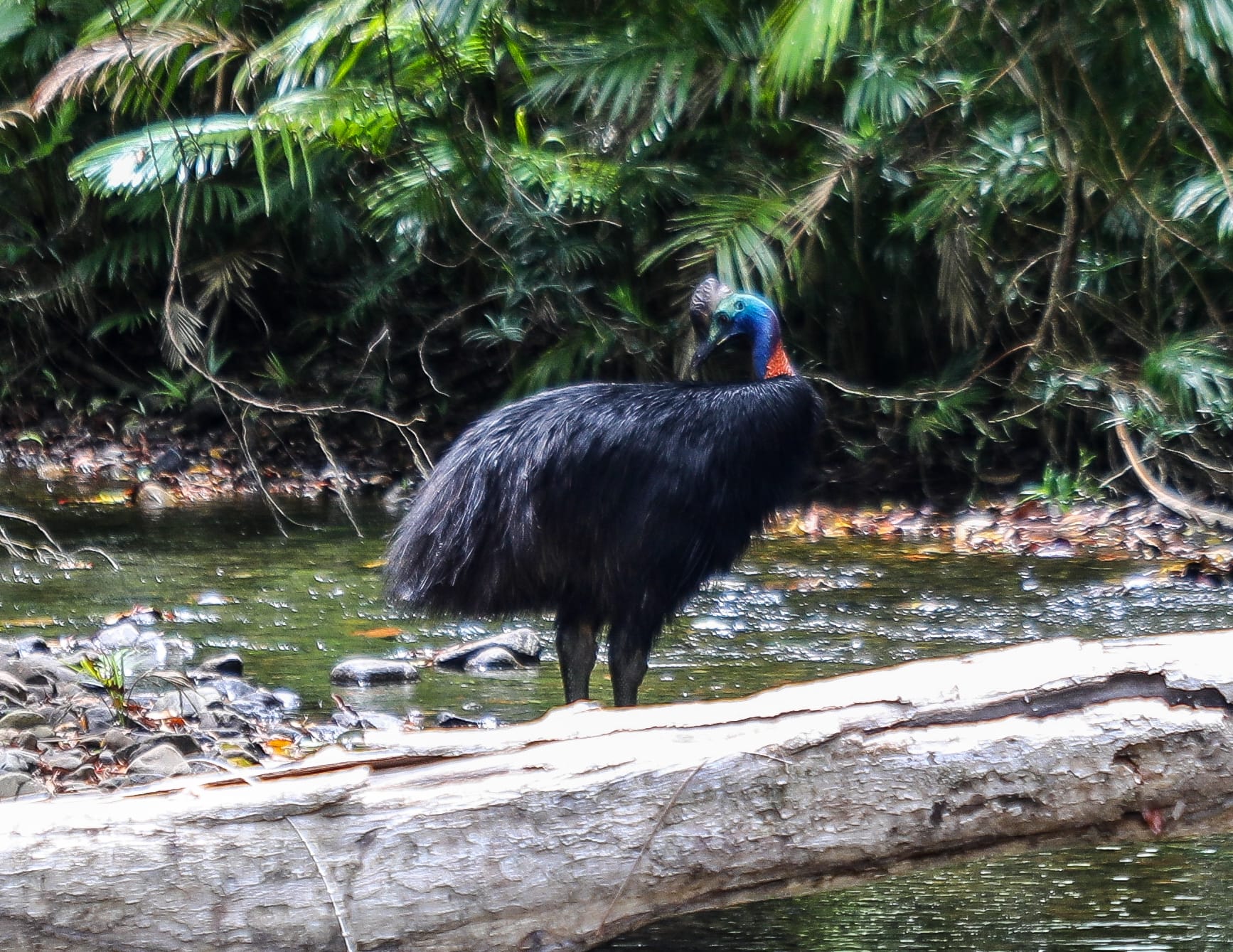
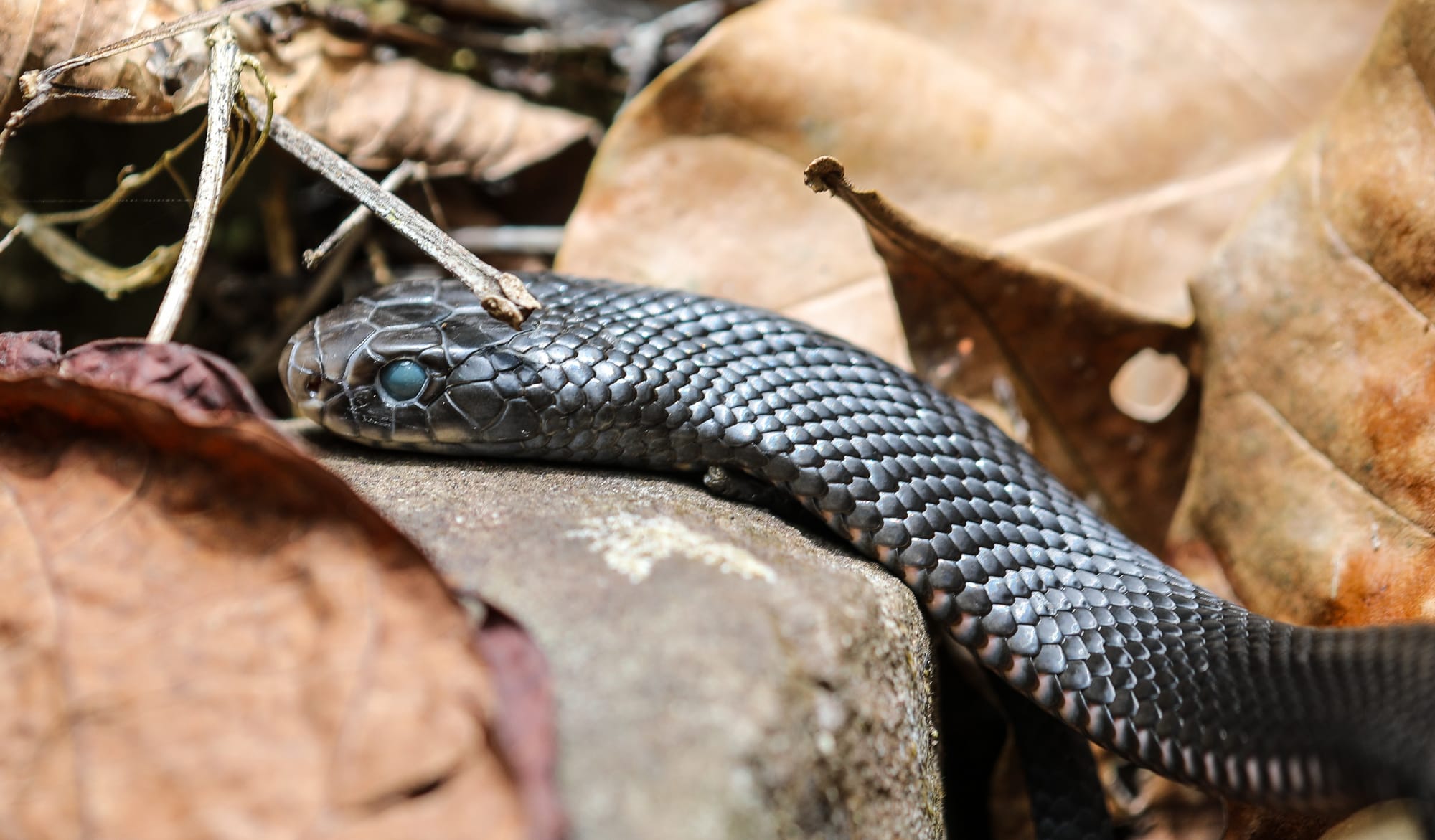
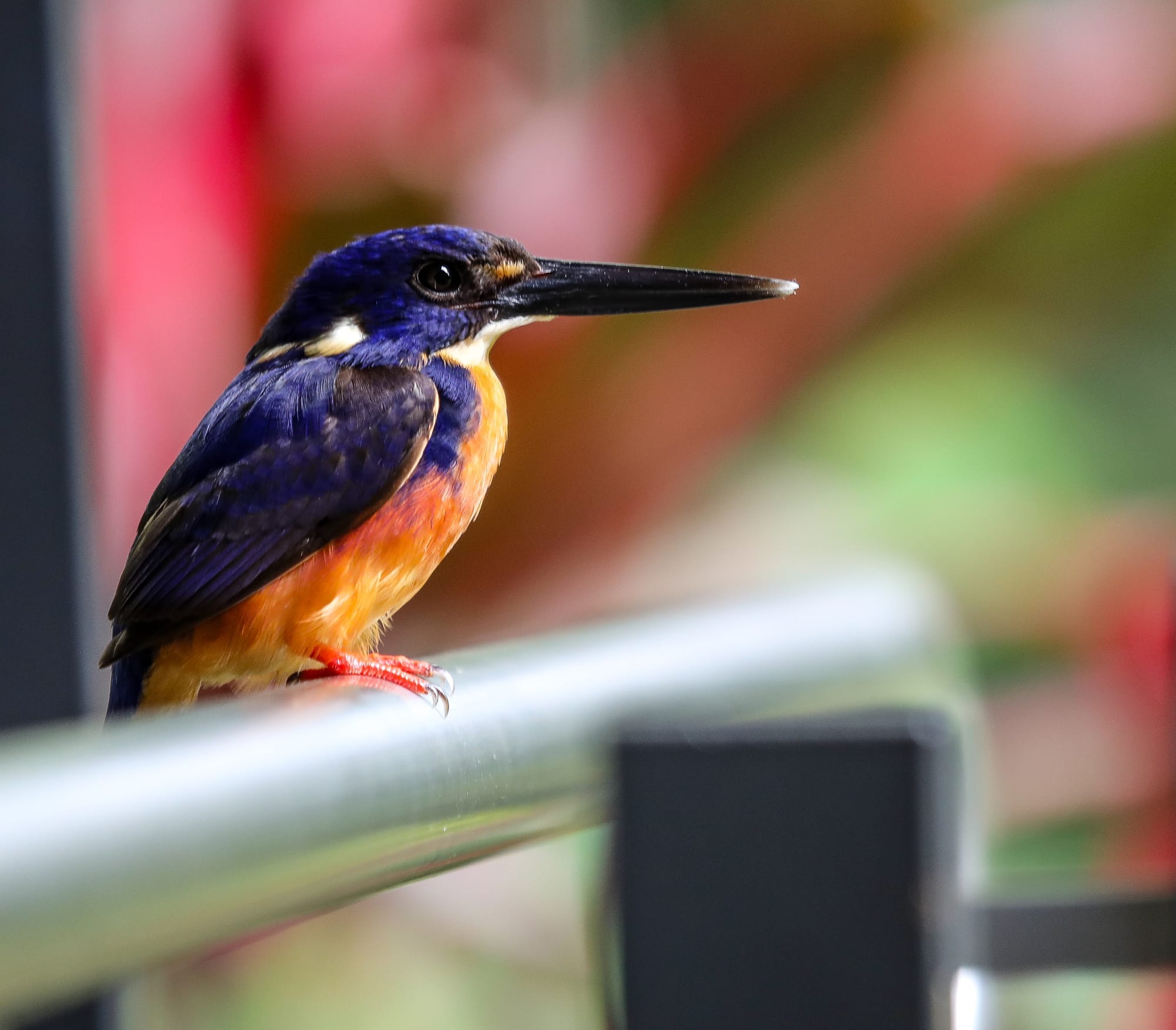
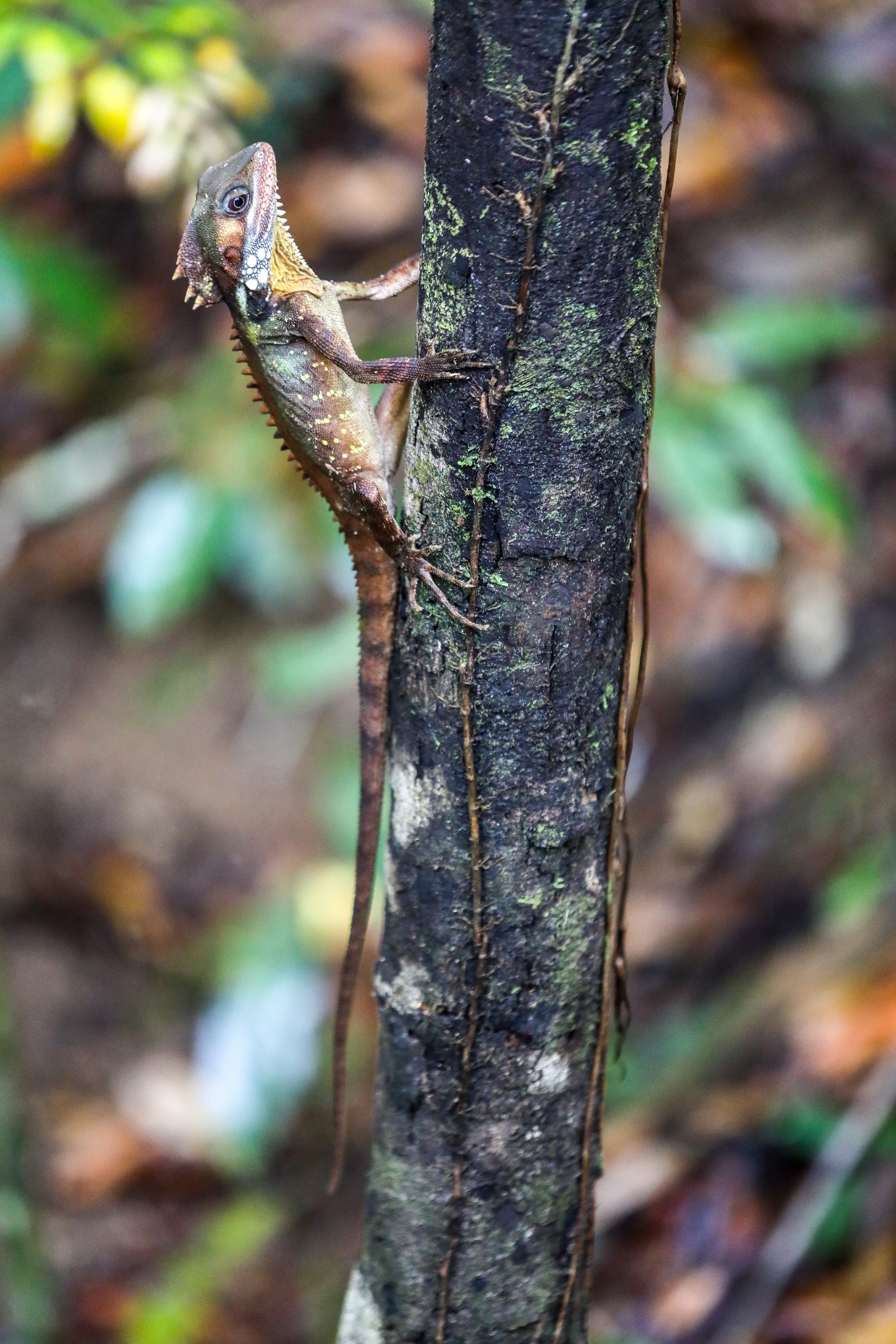
Clockwise from top left: Cassowary, Red Belly Snake, Boyd's Forest Dragon, Kingfisher
We then drove up to the northernmost point of the Daintree - Cape Tribulation. This is where reef meets rainforest, at a spectacular beach. This was by far the best beach I have ever visited.
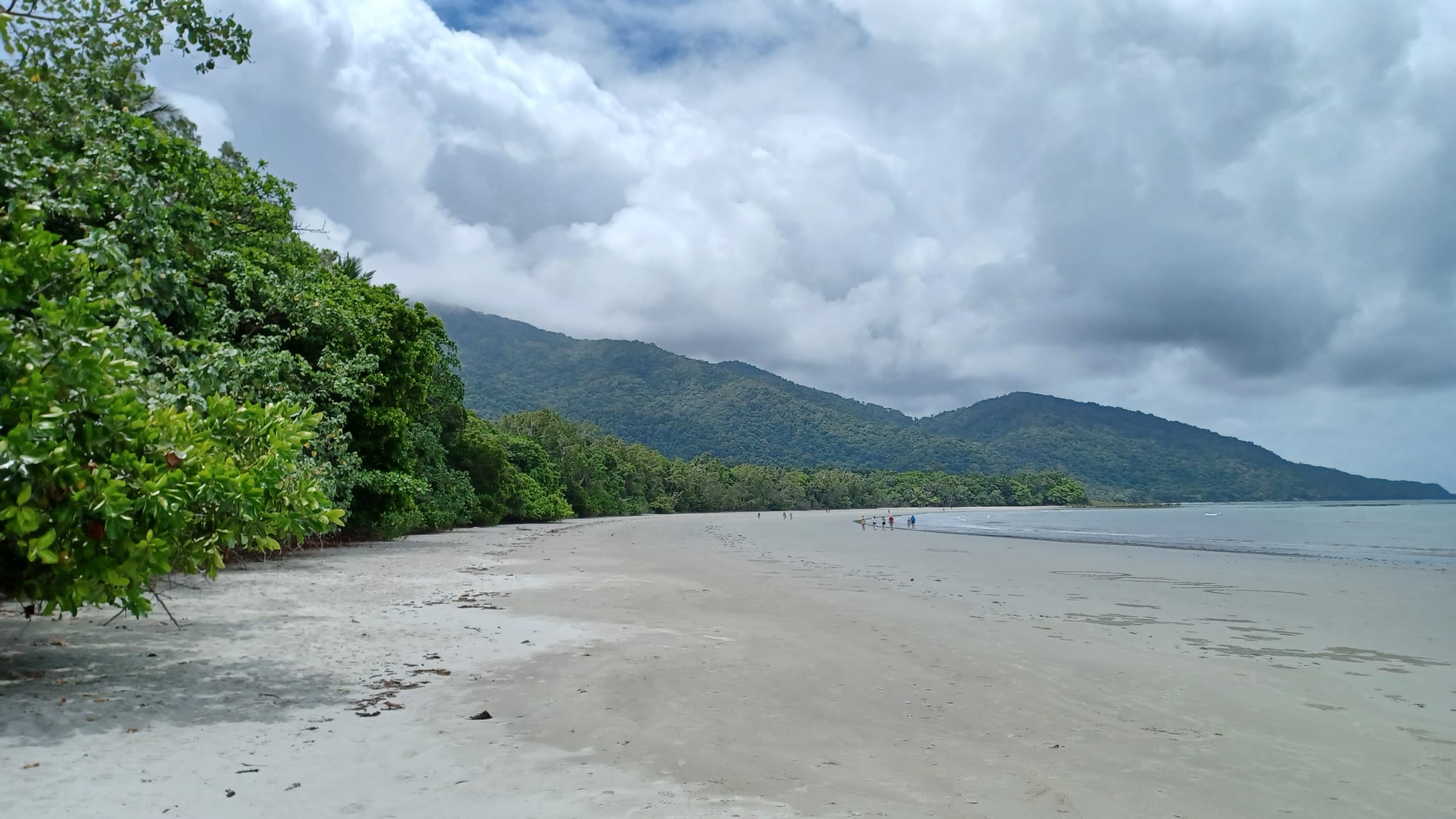
Cape Tribulation Beach - where rainforest meets reef
Other aspects of the day included going to the Daintree Ice Cream Company, swimming in one of the rainforest creeks, and visiting Alexandra Lookout before heading back to Port Douglas.
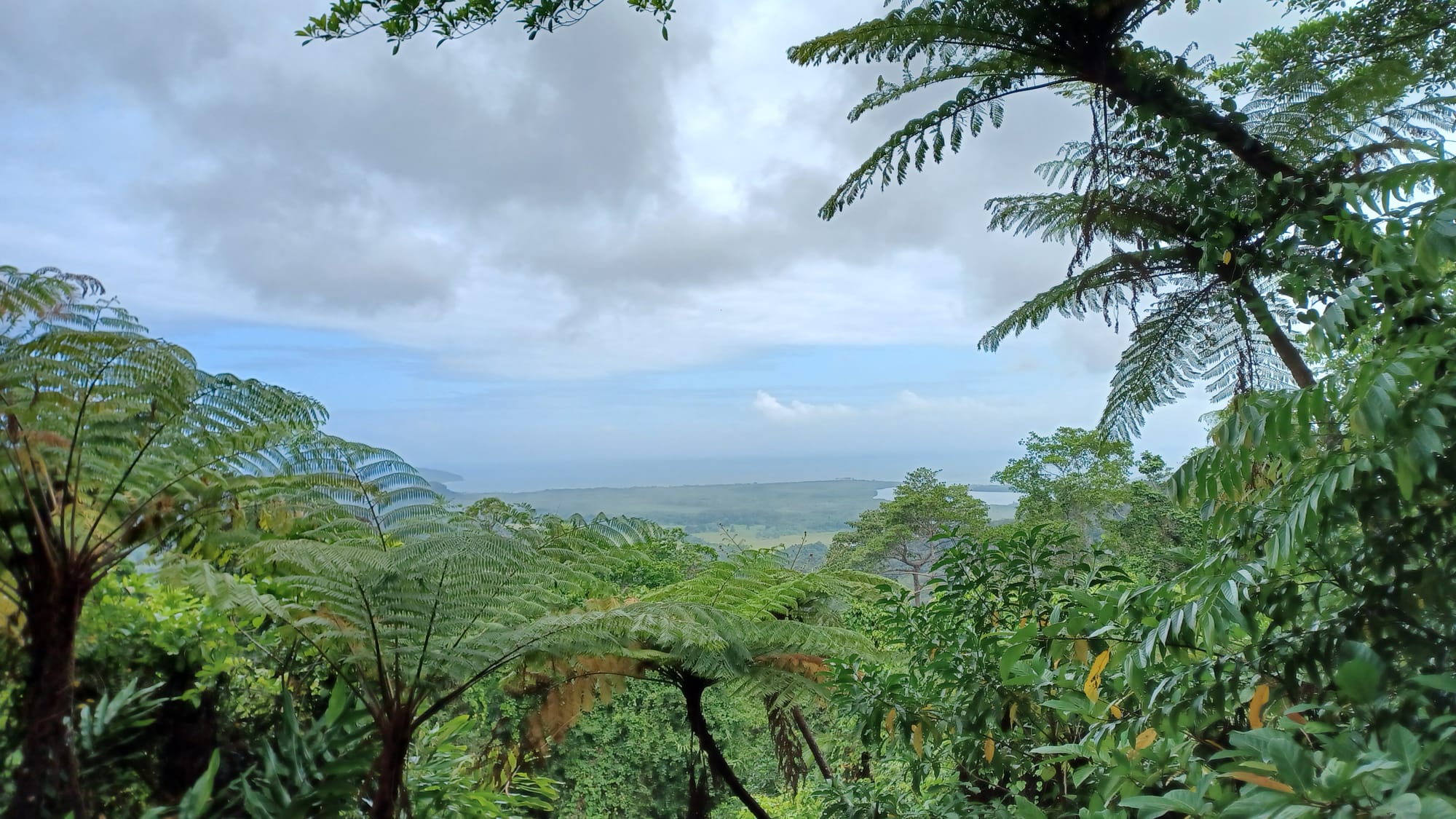
Alexandra Lookout
Kuranda
Another day trip that you might want to consider doing is to the village of Kuranda, via the Kuranda Scenic Railway and Skyrail. Again, this was a whole day tour organised by Brett's Kuranda Day Tour, with a group size of about 20 people. I would recommend this company if you do want to do it as a tour. A drive of 1 hour south from Port Douglas took us to Freshwater Station, where we caught the Kuranda Scenic Railway. The train would take us on a winding journey through the forest for 1.5 hours to reach Kuranda Station. Some facts about the railway include:
- 1873 - Gold was found inland, and needed transportation from the gold fields to the coast. However, the routes were dangerous and slow. Reliable supply route had to be found.
- Connection was needed for the rich mining belt with the sea. 1887 - construction commences.
- 33km of track between Cairns and Kuranda. Back then, the majority of the work was done by hand, many men lost their lives in the process too.
- 15 hand carved tunnels, 55 bridges, and 98 curves to the track.
It was amazing thinking about how tough it must have been to construct through the tropics, with the weather, dangerous animals and working conditions. En-route you get some great views of Barron Gorge National Park too.
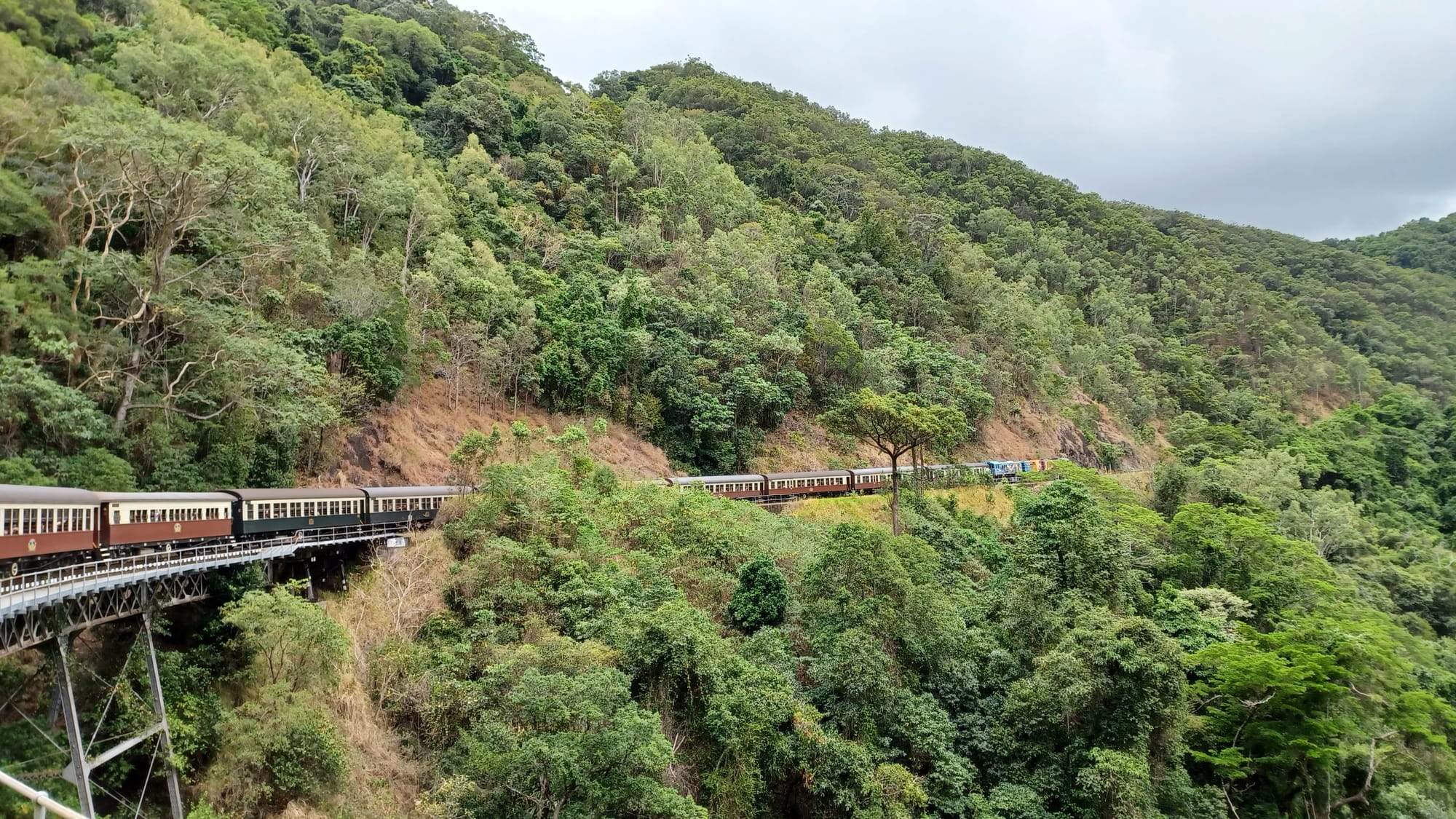
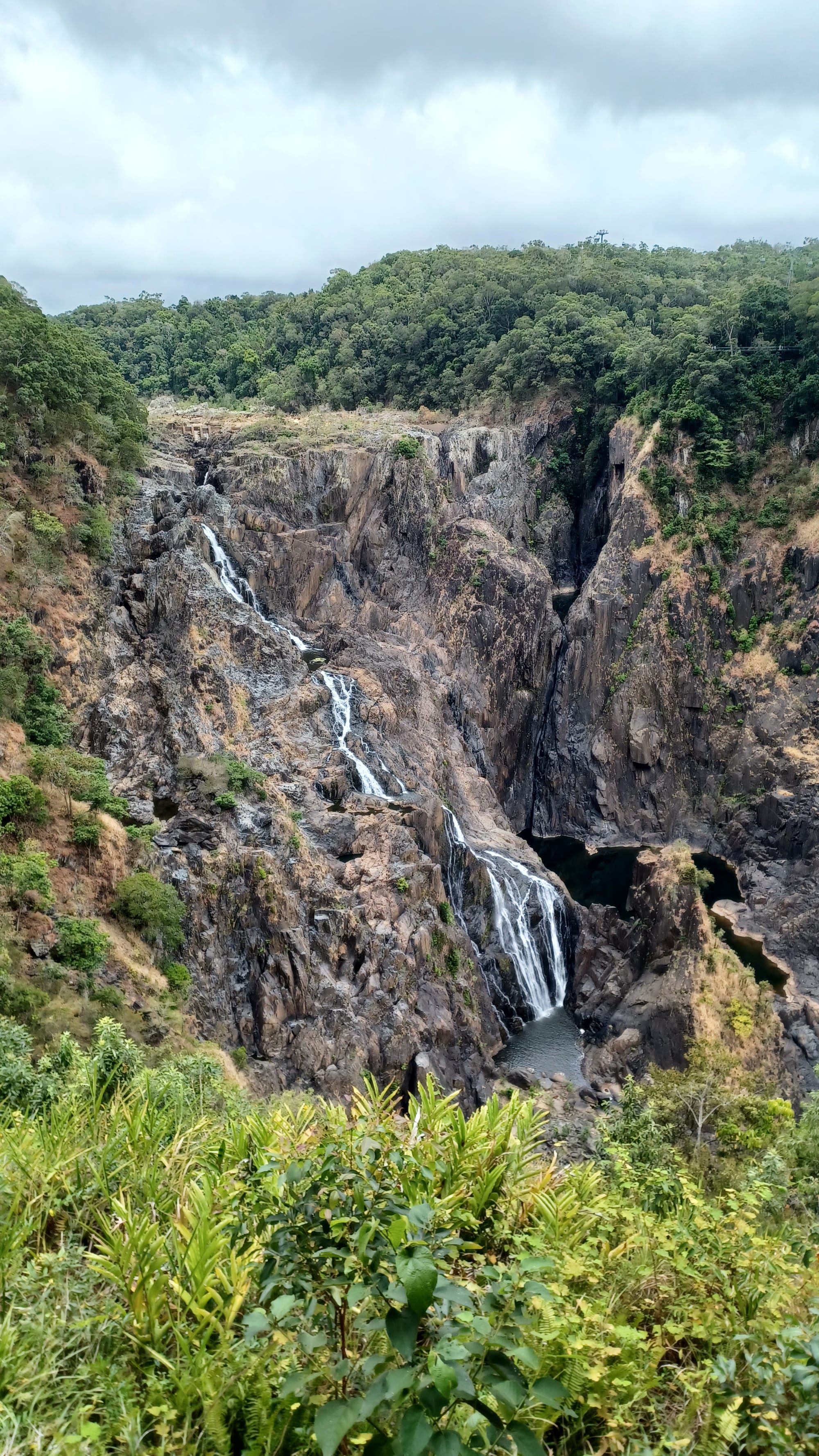
Once the train reached Kuranda, we had around 2.5 hours to explore the town. Used to be a very 'hip' place, and is mainly for eating, shopping and that sort of stuff. I had a look around the independent stores that were up there, but was drawn to doing the 'Jumrum Walk' - a 1.5km walk into the rainforest that started at Kuranda Village. From Kuranda, there was the option of taking the Skyrail back down. Following this, the final stop of the tour was at Palm Cove Beach, about halfway between Kuranda and Port Douglas. A nice place to have a stroll and admire the views.
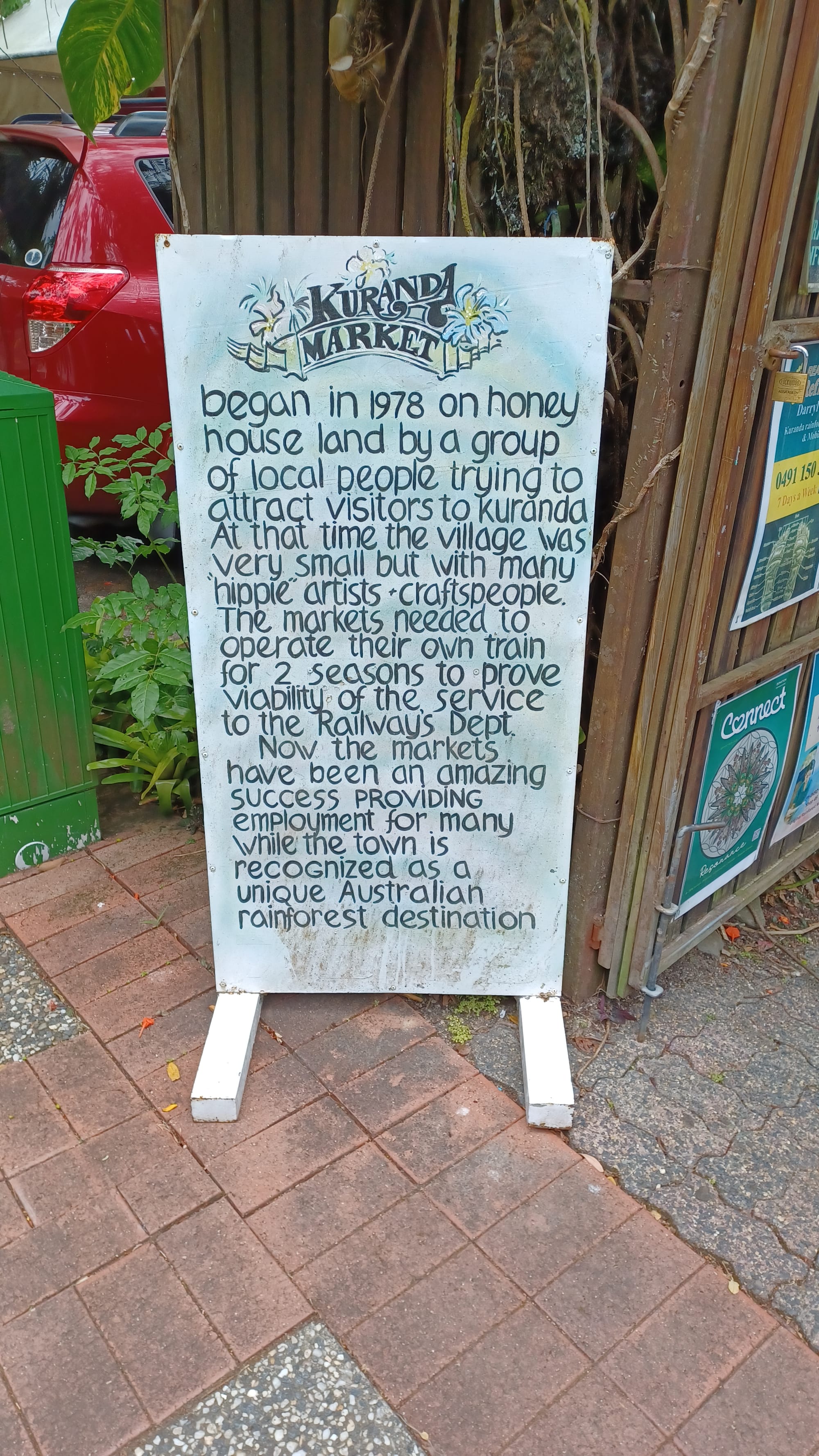
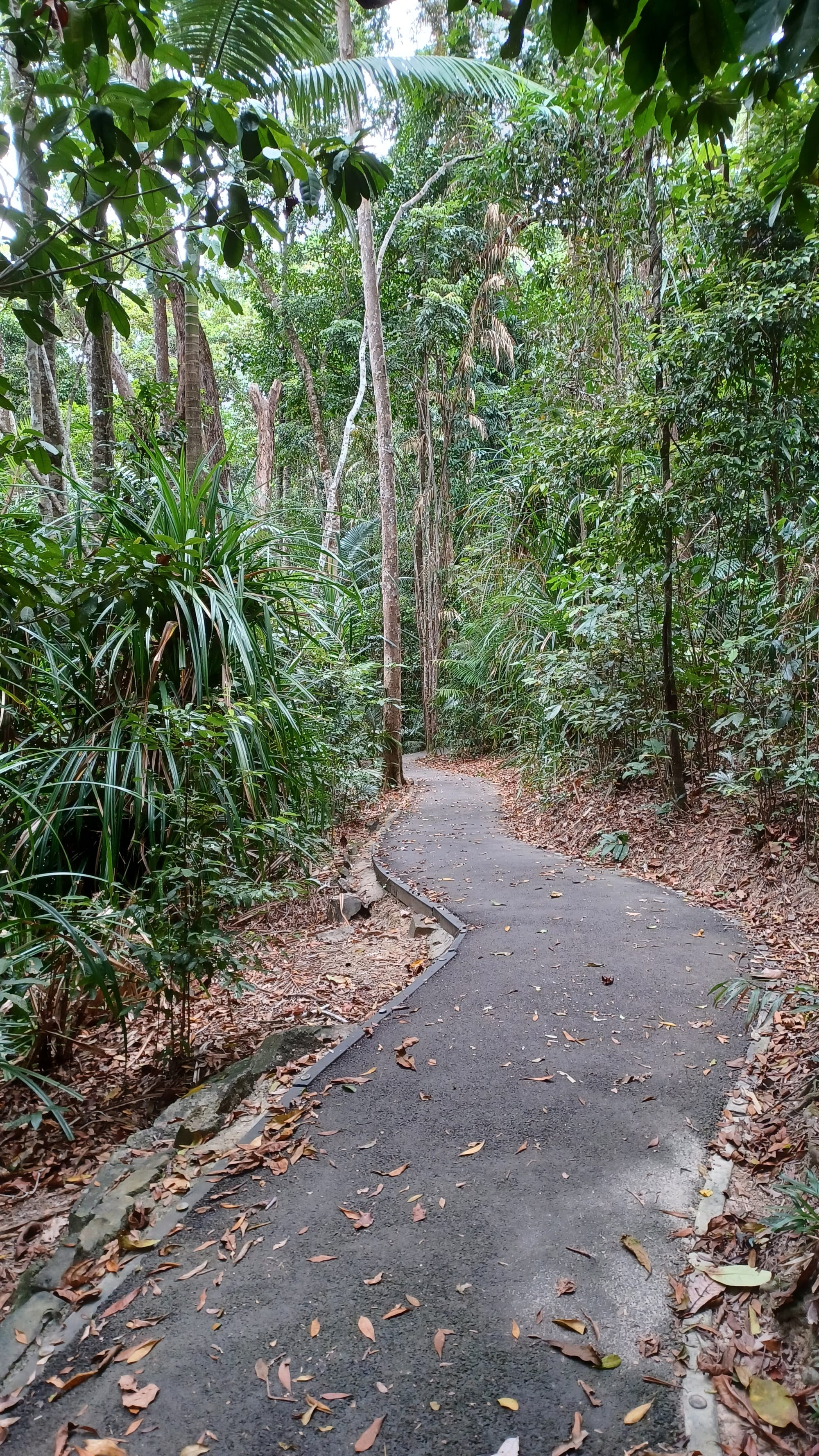
Great Barrier Reef
On my final day in Port Douglas, there was still one place that I needed to cross off my bucket list - the Great Barrier Reef. From the harbour, I took a speedboat out to the Low Isles with Reefsprinter - a local company operating out of Port Douglas. I would highly recommend using them, and if you can bring (or hire) a GoPro to get some great shots!
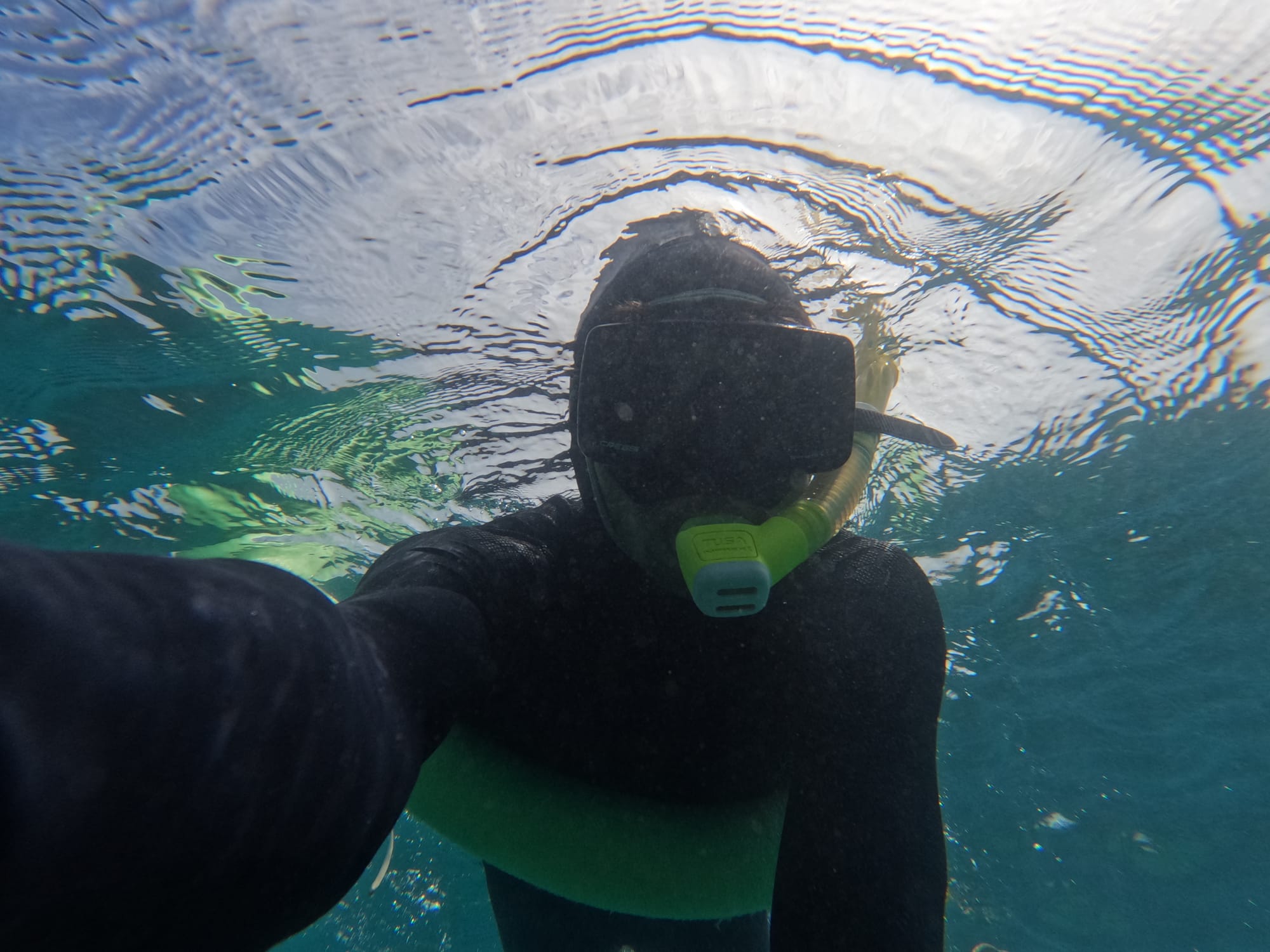
The speedboat ride to the Low Isles was jumpy, and isn't suitable for the elderly or those with bad backs. You then transfer to a glass bottom boat that takes you onto the island. After donning your masks, stinger suits and flippers you then have about 2 hours of free time to snorkel and explore the reef. It was my first time ever snorkelling, and it took some getting used to! It's a weird feeling being able to breathe whilst your head is fully submerged, but with some breath control I got the hang of it. If it's your first time, I would also recommend using a pool noodle so you can focus on the breathing and not the swimming.
It was a surreal experience snorkelling on the reef. A huge array of sealife (there's over 1000 types of fish in the area, turtles and sharks too). Some interesting things that I learnt about the reef were:
- The turtles are essentially 'high' (around November time) due to eating jellyfish (that's why they are so chill!)
- If you spent 5 mins at each location in the Great Barrier Reef and move onto the next, it would take you 8 years to see it all.
- The Reef stretches from the Torres Strait along all of QLD.
- Coral bleaching isn't a bad thing (like the media sometimes makes it out to be) - it is only bad when the sea temperature is too hot for too long
- Giant clams have a jaw power of 15 tonnes - I saw a few of those when snorkelling.
- Coral can infect you, so don't rest your feet on it (it also damages the coral)
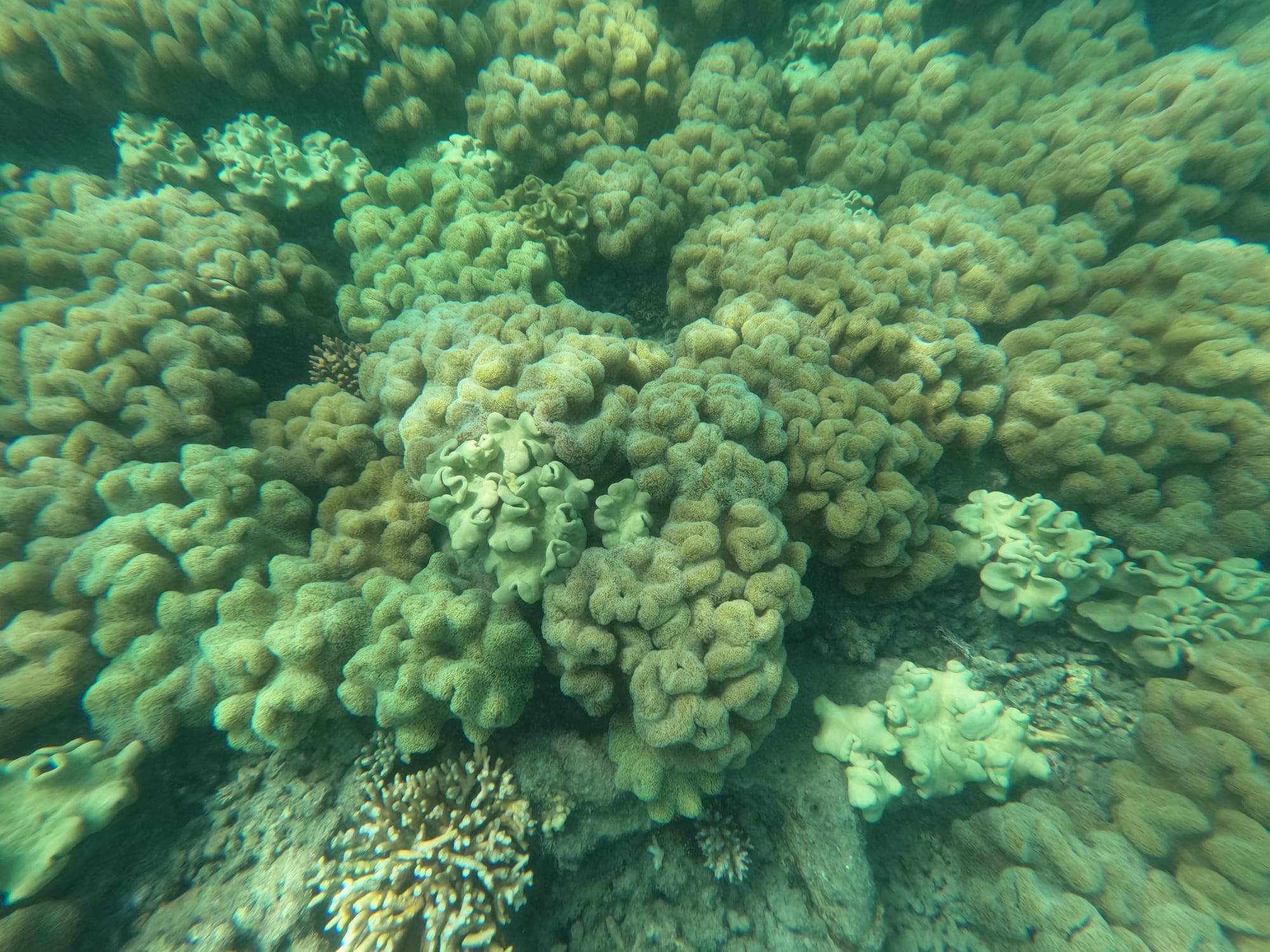
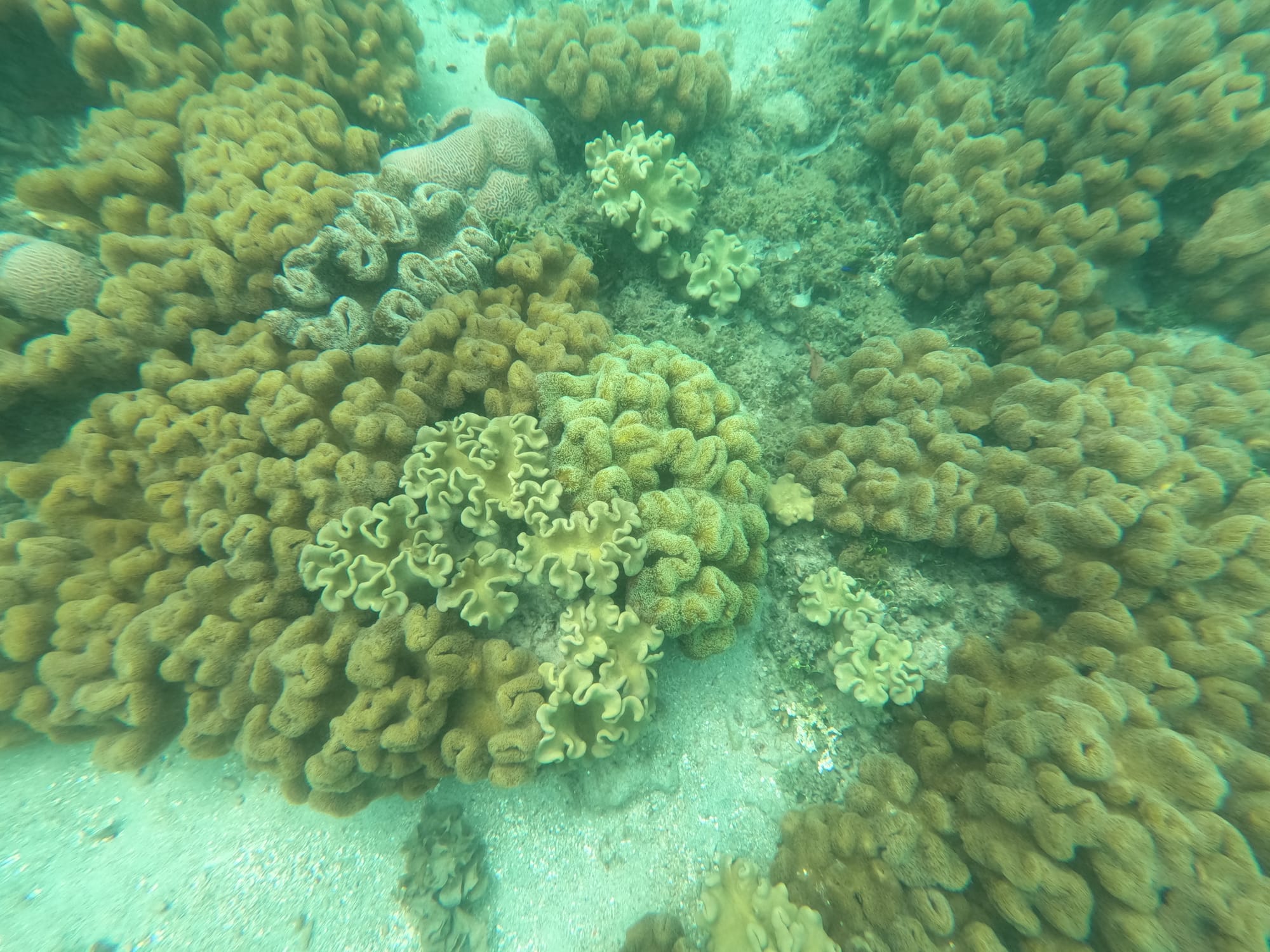
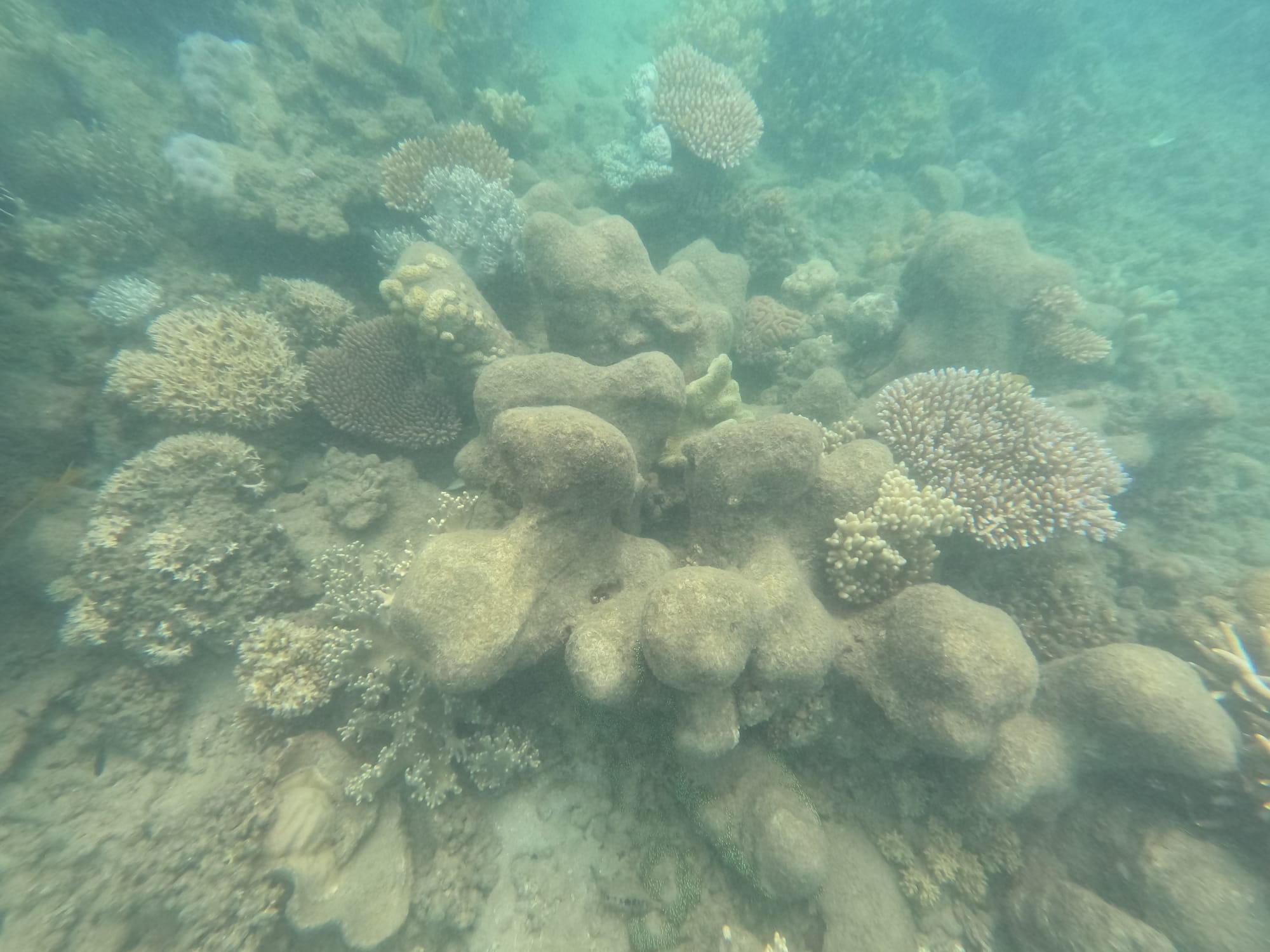
I pulled together some footage I got on a GoPro and made a short video below. Hope you enjoy!
PS: If you enjoyed this, why not consider subscribing for free here? (Just remember to click the verification link in your emails to confirm!)
